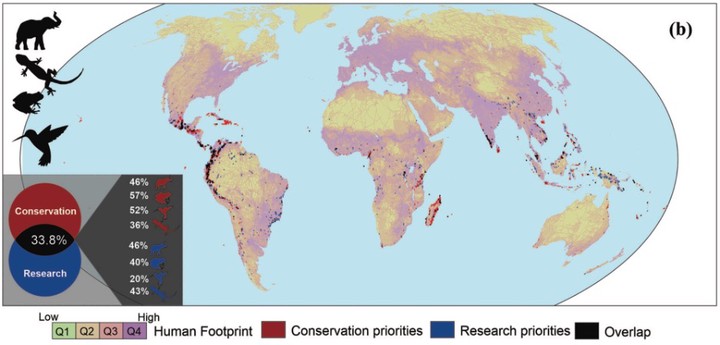Conservation Biogeography
 figure by Javi Nori
figure by Javi NoriOne of the aims of biodiversity science is to produce studies/knowledge that can help mitigate the current biodiversity crisis and contribute to the conservation of biological diversity. Owing to the intrinsic relationship between the two basic properties of biodiversity, diversity and distribution, and their obvious relevance to conservation, our research also has an applied component. In general, we try to implement macroecological analyses in the context of conservation planning, namely, the designation of priority sites for conservation or even research. Relevant sites for conservation are usually defined in an “either or” fashion based on richness, endemicity or threat. However, these definitions usually result in different sets of sites that are spatially non-congruent. This is why we favor a more comprehensive view of conservation where we take into account both diversity and distribution simultaneously to define priority sites for conservation (Villalobos et al. 2013). Moreover, we considered that such endeavor can be further applied to provide more information on research needs and knowledge gaps (Nori et al. 2020, 2023; Velazco et al. 2019, 2023). Another relevant topic in conservation biology is the identification and understanding of biological invasions. Using our evolutionary and macroecological approach, we have also contributed studies seeking to understand biological invasion patterns and their underlying mechanisms, from the perspective of native and exotic species (Kusumoto et al. 2019, Pinto-Ledezma et al. 2020) and the assemblages they form (Kusumoto et al. 2021). In the same vein, we are interested in macroecological approaches to study the effect of habitat loss and fragmentation on species’ extinction risk. Leveraging information on population abundances and local surveys as well as satellite images, we try to evaluate the effect of such fragmentation on species conservation status (Galán-Acedo et al. 2021,2023; Saldívar-Burrola et al. 2022) as well as the potential drivers behind species extinction risk (Galán-Acedo et al. 2024).